It’s that time again; these days I tend to get fewer toys as gifts so while the kiddies are playing with theirs, I have taken myself out into the fresh air, a glass of Vouvray in one hand and a pen and paper in the other, to compile my ‘in-flower’ list for Christmas 2013.
This year is better than last, with 15 plants in flower on Christmas Day compared to 11 in 2012, but cannot compare to the whopping 31 plants seen in 2011. Those of you with larger, more established gardens will not be impressed, but I’m quite pleased. The error I continue to make is not to group some of these plants together, so that real floral impact is never really achieved: I need a winter garden.
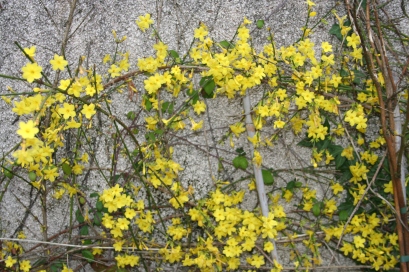
Winter flowering Jasmine on the boiler-house wall
The house is a riot of colour with the orchids in particular performing well. Out in the garden several herbaceous plants, grown from seed over the last few years, are also performing: Digitalis, Penstemon, Wallflowers and even Stocks have blooms in greater or lesser quantities. As you might expect, Helleborus nigra, the Christmas rose, is looking good in the bed by the front door. We finally bought a Mahonia media Charity last year and this has rewarded us with its first flower spike. Nearby, Jasminium nudiflorum is showing plenty of colour against the boiler-house wall.

Erica – white Heather
Less probable, Hebe Great Orme is covered in flowers and I found one yellow bloom on our Buddleja weyeriana. The dainty red climbing Rose Amadeus also has a couple of flowers. The white border offers a couple of plants: Erica Springwood White has masses of flowers while Viburnum burkwoodii is putting on a brave show with a handful. Over the other side of the garden our Arbutus, severely cut back by the cold winter of a couple of years ago, has formed a nice evergreen bush with plenty of lily-of-the-valley style blooms. Viburnum tinus, bought last year to hide the bins in the front garden, is covered with flat heads of flower.
……….
Our son graced us with his presence over Christmas and we took the opportunity to pack in a bit of tourism, visiting amongst other things, the wonderful apothecary museum in the 16th century hospital buildings at Issoudun. Outside in the gardens the ground beneath a tree was covered in fruits, which at first I took to be Mirabelle plums. On closer inspection the tree turned out to be a Gingko, beneath which was a huge quantity of off-yellow fruits. I took out a plastic bag and greedily began removing the stone seed from inside the soft, smelly fruit, quickly gathering a few dozen.
Ginkgo biloba is a tree whose leaves increase circulation in the brain. It is a popular herb in Chinese medicine and has been linked to improving memory and cognitive functions. The unique fan-shaped leaves of the ginkgo tree make it a popular ornamental as well. In the autumn these turn bright butter yellow before falling but fruits are only produced on female plants. I have seen in excess of 50 cultivars listed and no doubt there are many more: not bad for a plant which was thought to be extinct until discovered by Engelbert Kaempfer in around 1700.
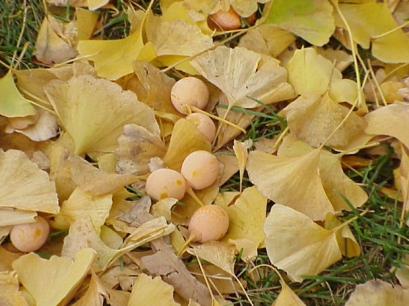
Ginkgo fruits – Issoudun
The germination of ginkgo is a little tricky, but there are a few tips that will increase your success. Freshly picked seeds are covered in a somewhat malodorous fruit. The ginkgo fruit contains small levels of urushiol, a skin irritant that is found in poison ivy and poison oak. No-one told me this and my hands were covered in blisters by the end of the day. Ginkgo biloba seeds have a long germination period and a tendency to pick up mould on the outer shell. Carefully cleaning the shells with a mild bleach solution will help.
Germination is encouraged by both stratification and scarification, so seeds are often left in pots of sand for the winter or put in the refrigerator. They are then either chipped with a sharp knife or filed with sandpaper to allow moisture to more easily penetrate the hard outer shell, before sowing in a well-drained compost in the spring.
I’ll let you know how I get on.
 After blogging my thoughts and posting hundreds of garden and plant photographs as a garden designer, landscaper and horticulturist in the UK, the tone has now changed along with my new location in rural central France..
After blogging my thoughts and posting hundreds of garden and plant photographs as a garden designer, landscaper and horticulturist in the UK, the tone has now changed along with my new location in rural central France..





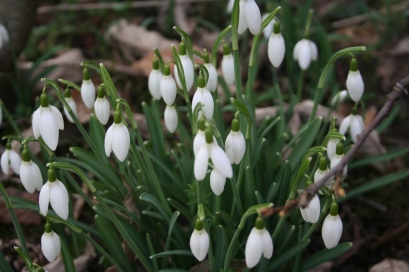

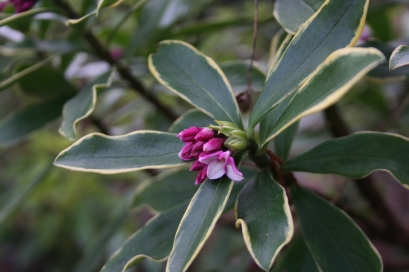

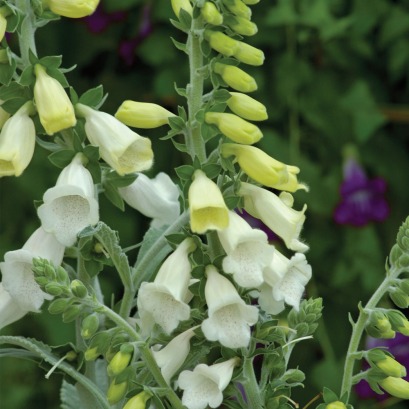









 We always grow Cherry Tomatoes in the garden and in addition to the unfailingly good Sungold I am trying a new variety called Santonio, with plum-shaped fruits. Last year was not good for outdoor Tom’s, but our plantation of Sun Cherry Premium was a great success. We grow a few Courgettes each year, you don’t need many, usually as a mixture to add interest on the plate This year I am trying BBQ mix; last year we had a good crop from another F1 variety early in the season, but Mildew eventually got to the plants and they had to go.
We always grow Cherry Tomatoes in the garden and in addition to the unfailingly good Sungold I am trying a new variety called Santonio, with plum-shaped fruits. Last year was not good for outdoor Tom’s, but our plantation of Sun Cherry Premium was a great success. We grow a few Courgettes each year, you don’t need many, usually as a mixture to add interest on the plate This year I am trying BBQ mix; last year we had a good crop from another F1 variety early in the season, but Mildew eventually got to the plants and they had to go. Sweet corn has not been a success here so far despite being a region where maize is grown commercially. I am hoping the new raised beds will provide better growing conditions provided I am more attentive to their need for water. I like the sweet varieties and have selected Lark F1 this time. Lettuces are traditionally grown amongst the flowers and seem to prefer the lighter soil in the back garden. Coloured foliage is always welcome and I have ordered traditional Lollo Rossa in addition to a Romaine type called Chartwell.
Sweet corn has not been a success here so far despite being a region where maize is grown commercially. I am hoping the new raised beds will provide better growing conditions provided I am more attentive to their need for water. I like the sweet varieties and have selected Lark F1 this time. Lettuces are traditionally grown amongst the flowers and seem to prefer the lighter soil in the back garden. Coloured foliage is always welcome and I have ordered traditional Lollo Rossa in addition to a Romaine type called Chartwell. Growing perennials from seed is something we do each year as it’s a wonderful way to fill up a new garden. This is now extending into the vegetable garden with the purchase of a packet of Artichoke Green Globe Improved. I love fresh artichokes and I am determined to have a large clump despite them dying whenever I buy plants from the garden centre.
Growing perennials from seed is something we do each year as it’s a wonderful way to fill up a new garden. This is now extending into the vegetable garden with the purchase of a packet of Artichoke Green Globe Improved. I love fresh artichokes and I am determined to have a large clump despite them dying whenever I buy plants from the garden centre. Beans are not something I do well but I persevere! For the first time since we moved to France we will be trying Broad Beans and have selected an RHS award-winning dwarf variety called Robin Hood. My wife loves to eat them raw. Climbing beans are my ‘bête noire’, always running out of steam before I have harvested more than a handful. I have been growing them on a pergola where a neighbour’s tree, now removed, competes heavily for nutrients and water. Monte Cristo is going to change all that, I hope.
Beans are not something I do well but I persevere! For the first time since we moved to France we will be trying Broad Beans and have selected an RHS award-winning dwarf variety called Robin Hood. My wife loves to eat them raw. Climbing beans are my ‘bête noire’, always running out of steam before I have harvested more than a handful. I have been growing them on a pergola where a neighbour’s tree, now removed, competes heavily for nutrients and water. Monte Cristo is going to change all that, I hope. Finally, for a bit of fun, I am intending to grow Swiss Chard White Silver 3, of which I know very little but it was recommended in the T&M catalogue by Alan Titchmarch, no less. In addition I am trying Golden Berries (variety Little Lanterns), delicious and very trendy fruits which I last grew in a greenhouse with great success some 25 years ago. Wish me luck!
Finally, for a bit of fun, I am intending to grow Swiss Chard White Silver 3, of which I know very little but it was recommended in the T&M catalogue by Alan Titchmarch, no less. In addition I am trying Golden Berries (variety Little Lanterns), delicious and very trendy fruits which I last grew in a greenhouse with great success some 25 years ago. Wish me luck!




